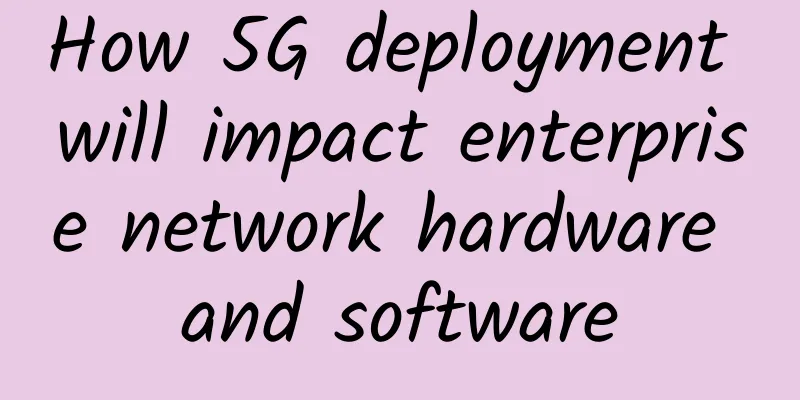How 5G deployment will impact enterprise network hardware and software

|
For most enterprises, IT teams will deploy fifth-generation cellular technology in two different ways: mobile and fixed wireless broadband. Because most 4G to 5G upgrades happen within mobile operators’ networks, many enterprise network architects forget they have a job to do, too.
In this article, we’ll discuss the impact of 5G deployment on a typical enterprise network, while also exploring what hardware, software, and services enterprises will need to support this emerging technology. When talking about 5G, one benefit people almost always talk about is improved network throughput. In fact, 5G deployments are starting to show impressive numbers in many areas, many times higher than current 4G networks. Another key benefit of 5G that is largely overlooked is low latency. For enterprise users, low latency is very important from a mobile workforce perspective. Real-time communications have become a must-have for all mobile or remote workers. The problem here is that current generation wireless broadband can have latency issues, causing interruptions in audio and video streams. With the improvement in latency provided by 5G technology, most real-time applications can provide a consistent experience whether the employee is in the corporate office or in a remote location. Three ways 5G will impact real-time communications 5G will improve real-time communications, which is important information for network architects:
Also, don’t forget that the enterprise must be responsible for managing and securing the growing number of IoT and mobile devices, which is where unified endpoint management (UEM) and security-as-a-service tools come in handy. Unified endpoint management can help maintain endpoint health from a physical perspective and provide granularity at the application level to monitor the status of endpoints across the network. Security-as-a-service tools will help simplify policy enforcement for mobile devices connected to the Internet, while also moving security-based data flows outside the corporate network. |
<<: 5G is here! How long will it take for it to be truly universally adopted?
Recommend
Sharktech Spring Promotion: 10Gbps unlimited data/Dual Gold 6148/256GB/2*2T NVMe/starting from $329/month
The old merchant Sharktech has just launched a sp...
To promote user migration to 5G, these tasks need to be done in advance
[[357697]] After the issuance of 5G licenses on D...
Prevent data encryption from hijacking the network: these four strategies you need to get
Encryption protects network traffic from hackers ...
What are the categories of 800G optical modules?
800G optical modules have entered mass production...
SPI Subsystem SPI Driver
1. SPI driver source file directory Linux common ...
Stop making excuses for being conservative. Chongqing Local Taxation Bureau has already tasted the sweetness of IT innovation in the past eight years!
Editor’s Note: The Chongqing Local Taxation Burea...
WOT Zhang Fuxing: Evolution of Zhihu container platform and its integration with big data
[51CTO.com original article] On May 18-19, 2018, ...
Justhost newly launched New York VPS, multiple data centers in the United States/Russia/UK/Germany/Hong Kong, China, etc. starting from $1.16/month
JustHost.asia sent information about the new VPS ...
[Black Friday] Megalayer: Hong Kong/Singapore VPS flash sale 9.9 yuan/month, Hong Kong server 199 yuan/month, top up and get 10% back
Megalayer launched a Black Friday flash sale, whi...
[Hard-core literacy] What exactly is coherent optical communication?
introduction: Hello everyone, I am Xiaozaojun. In...
Design and implementation of Nodejs-Ipc
[[347927]] This article is reprinted from the WeC...
SiliCloud: Japan VPS annual payment from $29.84/1GB memory, 20G SSD, 500GB monthly traffic
I saw this company's information on LET. The ...
Gartner lamented that there has never been such a volatile market in 25 years
According to Gartner's forecast, global IT sp...
Aicrypt and Anbai Technology reached a strategic cooperation to build the "Application Security +" of the information industry
On June 15, Aicrypt and Anbai Technology held a s...






![[Black Friday] HawkHost: 35% off on virtual hosts, 30% off on reseller hosts/cloud servers, data centers in Hong Kong/Los Angeles, etc.](/upload/images/67cac019c2186.webp)


